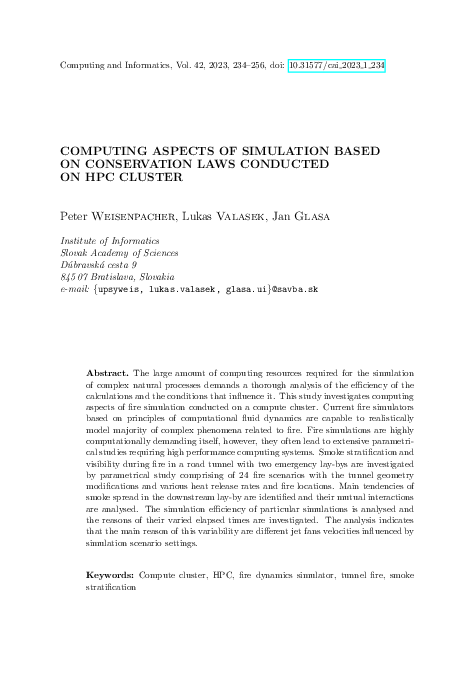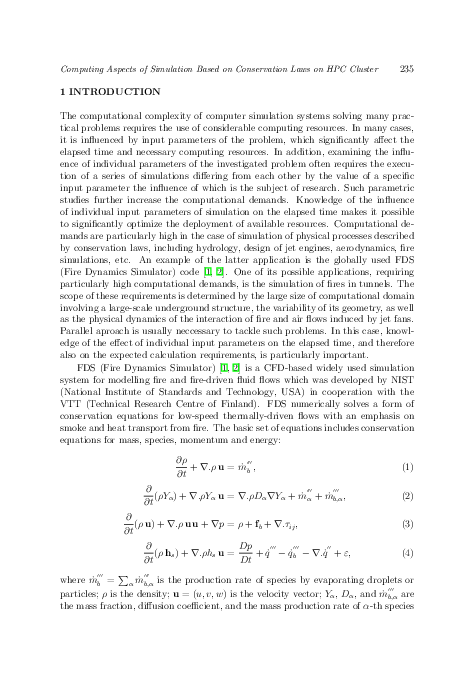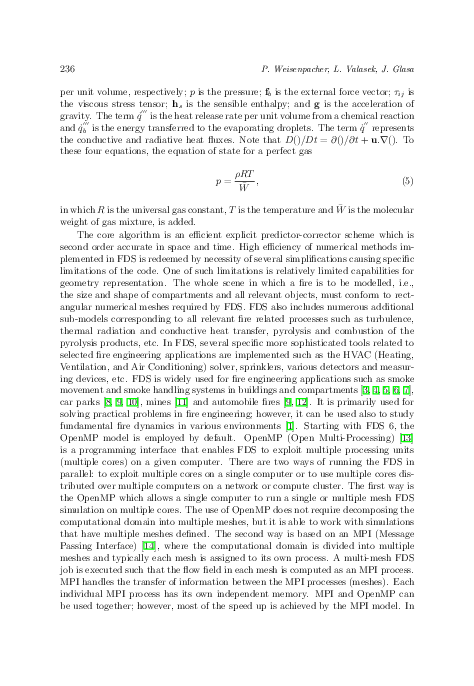Computing Aspects of Simulation Based on Conservation Laws Conducted on HPC Cluster
keywords: Compute cluster, HPC, fire dynamics simulator, tunnel fire, smoke stratification
The large amount of computing resources required for the simulation of complex natural processes demands a thorough analysis of the efficiency of the calculations and the conditions that influence it. This study investigates computing aspects of fire simulation conducted on a compute cluster. Current fire simulators based on principles of computational fluid dynamics are capable to realistically model majority of complex phenomena related to fire. Fire simulations are highly computationally demanding itself, however, they often lead to extensive parametrical studies requiring high performance computing systems. Smoke stratification and visibility during fire in a road tunnel with two emergency lay-bys are investigated by parametrical study comprising of 24 fire scenarios with the tunnel geometry modifications and various heat release rates and fire locations. Main tendencies of smoke spread in the downstream lay-by are identified and their mutual interactions are analysed. The simulation efficiency of particular simulations is analysed and the reasons of their varied elapsed times are investigated. The analysis indicates that the main reason of this variability are different jet fans velocities influenced by simulation scenario settings.
reference: Vol. 42, 2023, No. 1, pp. 234–256


